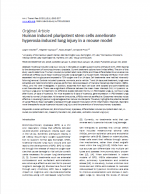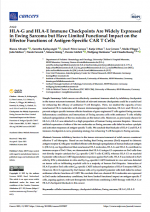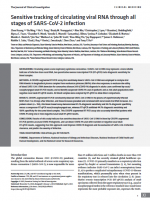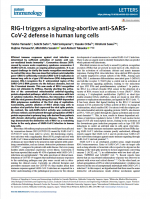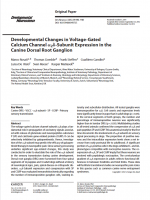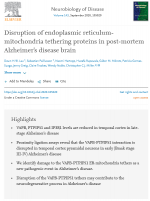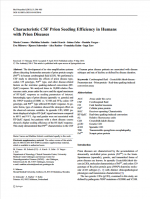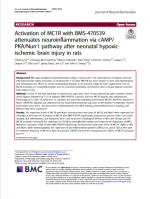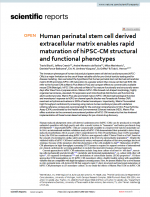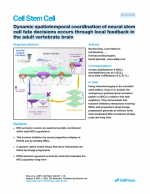23.07.2021
Human induced pluripotent stem cells ameliorate hyperoxia-induced lung... American Journal of Translational Research, 2020
Abstract: Hyperoxia-induced lung injury occurs in neonates on oxygen support due to premature birth, often leading to the development of bronchopulmonary dysplasia. Current treatment options have limited effect. The aim of this study was to determine if human induced pluripotent stem cells (iPSCs) and those differentiated to an alveolar-like phenotype (diPSCs) could repair hyperoxia-induced lung damage in a mouse model. Neonatal C57BL6/J mice were separated into two groups and exposed to 75% oxygen over 6 or 14 days. Cell treatments were ins...
16.07.2021
HLA-G and HLA-E Immune Checkpoints Are Widely Expressedin Ewing Sarcom... Human Immunology, 2021
Abstract The non-classical HLA class I molecule HLA-G is expressed in trophoblasts where it contributes to maternal-fetal tolerance. HLA-G has been implicated in the control of trophoblast invasion, uterine vascular remodeling, and maintenance of a local immunosuppressive state. Understanding HLA-G biology at the maternal-fetal interface is therefore a critical issue in reproduction. In this regard, we review here: (i) the effects of HLA-G on d...
09.07.2021
Sensitive tracking of circulating viral RNA through all stages of SARS... The Journal of Clinical Investigation, 2021
BACKGROUND. Circulating severe acute respiratory syndrome coronavirus 2 (SARS-CoV-2) RNA may represent a more reliable indicator of infection than nasal RNA, but quantitative reverse transcription PCR (RT-qPCR) lacks diagnostic sensitivity for blood samples. METHODS. A CRISPR-augmented RT-PCR assay that sensitively detects SARS-CoV-2 RNA was employed to analyze viral RNA kinetics in longitudinal plasma samples from nonhuman primates (NHPs) after virus exposure; to evaluate the utility of blood SARS-CoV-2 RNA...
25.06.2021
RIG-I triggers a signaling-abortive anti-SARS-CoV-2 defense in human l... Nature Immunology, 2021
Abstract Efficient immune responses against viral infection are determined by sufficient activation of nucleic acid sensor–mediated innate immunity1,2. Coronavirus disease 2019, caused by severe acute respiratory syndrome coronavirus 2 (SARS-CoV-2), remains an ongoing global pandemic. It is an urgent challenge to clarify the innate recognition mechanism to control this virus. Here we show t...
17.06.2021
Developmental Changes in Voltage-Gated Calcium Channel alpha(2)delta-S... Developmental Neuroscience, 2012
Abstract The voltage-gated calcium channel subunit alpha(2)delta plays a fundamental role in propagation of excitatory signals associated with release of glutamate and neuropeptides substance P (SP) and calcitonin gene-related protein (CGRP). It can be selectively inhibited by gabapentinoids. Hence, investigation of the alpha(2)delta subunit may predict the efficacy of gabapentinoid therapy in neuropathic pain. Since sensory processing underlies significant age-related changes, this study was conducted in order to elucidate the role...
11.06.2021
Disruption of endoplasmic reticulum-mitochondria tethering proteins in... Neurobiology of Disease, 2020
Abstract Signaling between the endoplasmic reticulum (ER) and mitochondria regulates a number of key neuronal functions, many of which are perturbed in Alzheimer's disease. Moreover, damage to ER-mitochondria signaling is seen in cell and transgenic models of Alzheimer's disease. However, as yet there is little evidence that ER-mitochondria signaling is altered in human Alzheimer's disease brains. ER-mitochondria signaling is mediated by interactions between the integral ER protein VAPB and the outer mitochondrial membrane prot...
02.07.2021
Characteristic CSF prion seeding efficiency in humans with prion disea... Molecular Neurobiology, 2015
Abstract The development of in vitro amplification systems allows detecting femtomolar amounts of prion protein scrapie (PrP(Sc)) in human cerebrospinal fluid (CSF). We performed a CSF study to determine the effects of prion disease type, codon 129 genotype, PrP(Sc) type, and other disease-related factors on the real-time quaking-induced conversion (RT-QuIC) response. We analyzed times to 10,000 relative fluorescence units, areas under the curve and the signal maximum of RT-QuIC response as seeding parameters of interest. Interestingly, ty...
03.06.2021
Activation of MC1R with BMS-470539 attenuates neuroinflammation via cA... Journal of Neuroinflammation, 2021
Abstract Microglia-mediated neuroinflammation plays a crucial role in the pathogenesis of hypoxic-ischemic (HI)-induced brain injury. Activation of melanocortin-1 receptor (MC1R) has been shown to exert anti-inflammatory and neuroprotective effects in several neurological diseases. In the present study, we have explored the role of MC1R activation on neuroinflammation and the potential underlying mechanisms after neonatal hypoxic-ischemic brain injury in rats. This study demonstrates that activation of MC1R with BMS-470539 attenuated neuro...
17.05.2021
Human perinatal stem cell derived extracellular matrix enables rapid m... Nature, 2020
Abstract The immature phenotype of human induced pluripotent stem cell derived cardiomyocytes (hiPSC-CMs) is a major limitation to the use of these valuable cells for pre-clinical toxicity testing and for disease modeling. Here we tested the hypothesis that human perinatal stem cell derived extracellular matrix (ECM) promotes hiPSC-CM maturation to a greater extent than mouse cell derived ECM. We refer to the human ECM as Matrix Plus (Matrix Plus) and compare effects to commercially available mouse ECM (Matrigel). hiPSC-CMs cultured on Mat...
14.05.2021
Dynamic spatiotemporal coordination of neural stemcell fate decisions... Cell Stem Cell, 2021
Abstract Neural stem cell (NSC) populations persist in the adult vertebrate brain over a lifetime, and their homeostasis is controlled at the population level through unknown mechanisms. Here, we combine dynamic imaging of entire NSC populations in their in vivo niche over several weeks with pharmacological manipulations, mathematical modeling, and spatial statistics and demonstrate that NSCs use spatiotemporally resolved local feedback signals to coordinate their decision to divide in adult zebrafish brains. These involve No...



